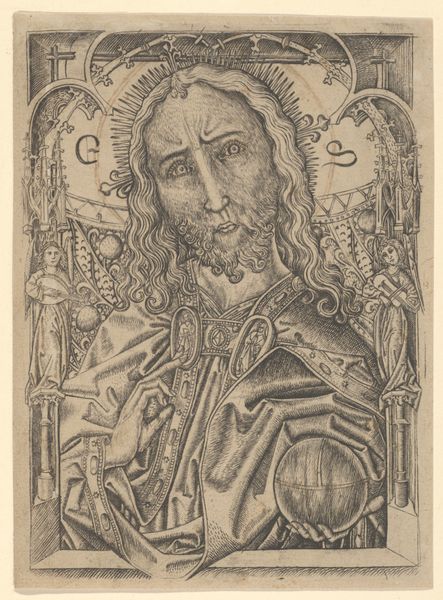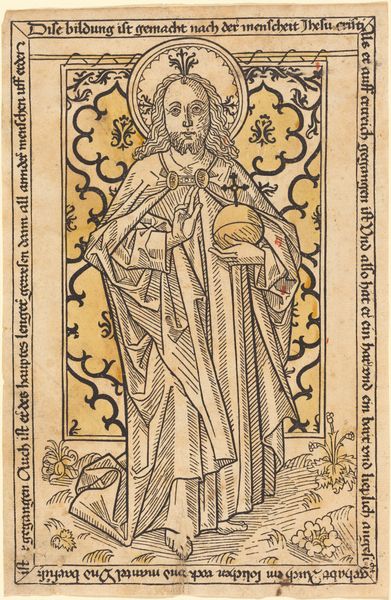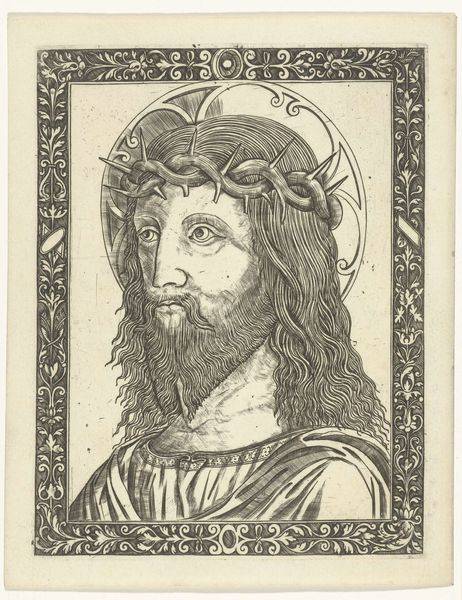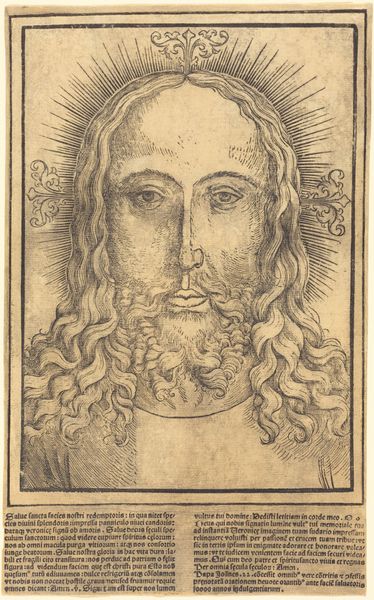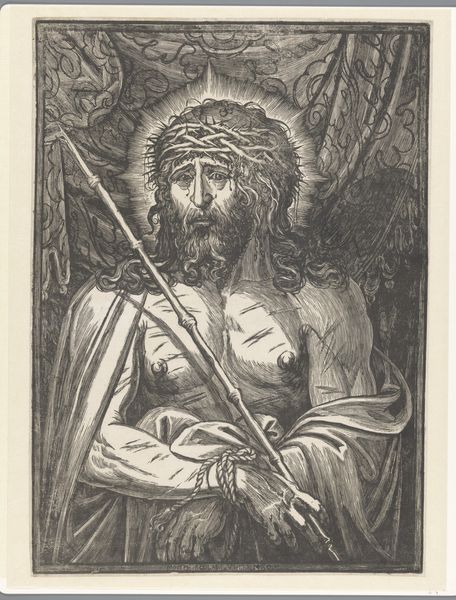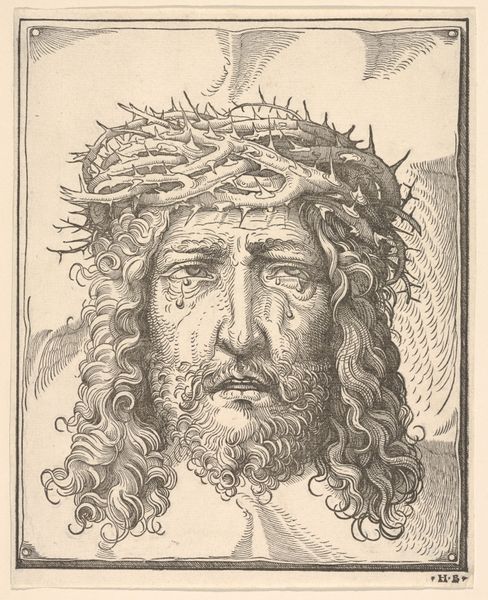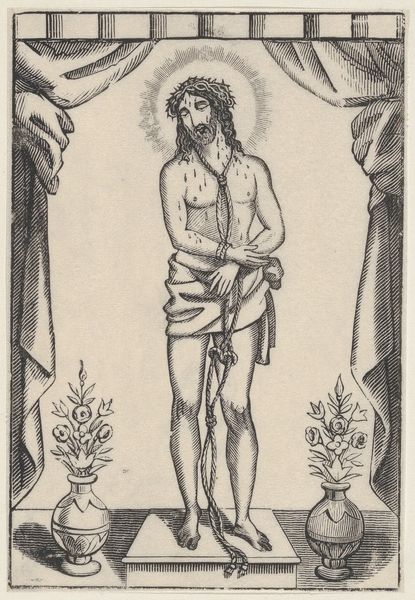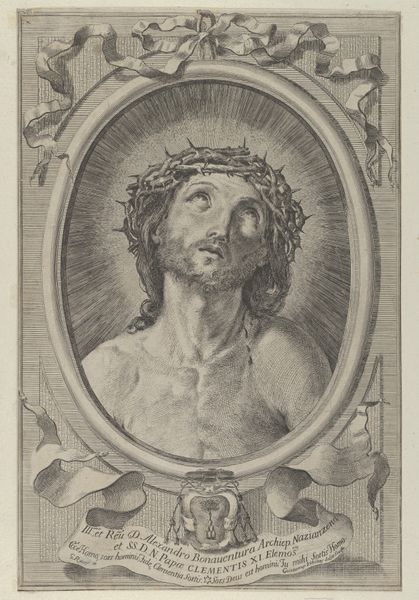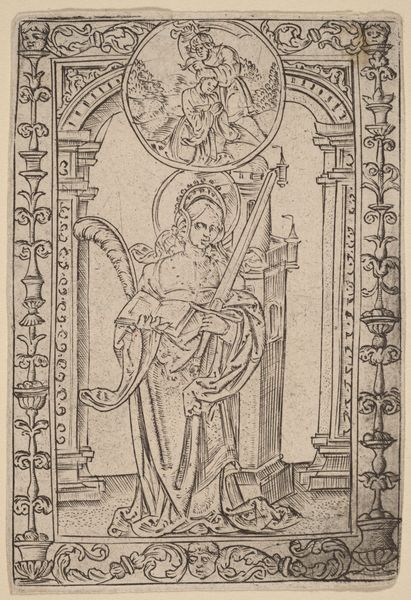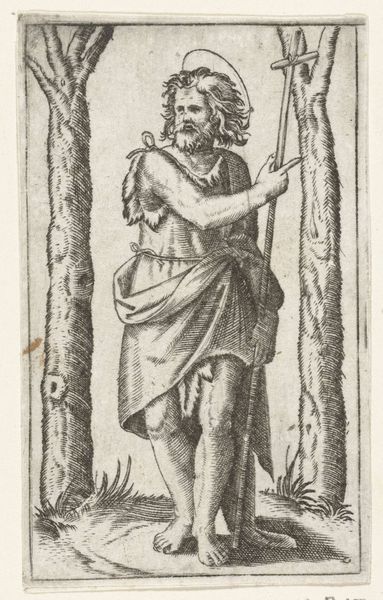
Christ as the man of sorrows set within an ornate frame 1495 - 1505
0:00
0:00
drawing, print, intaglio, pen, engraving
#
portrait
#
drawing
#
pen drawing
# print
#
pen illustration
#
pen sketch
#
intaglio
#
pen
#
history-painting
#
northern-renaissance
#
italian-renaissance
#
engraving
Dimensions: Sheet: 3 3/4 x 2 5/8 in. (9.6 x 6.7 cm)
Copyright: Public Domain
Curator: The Metropolitan Museum of Art holds this small, compelling engraving titled "Christ as the man of sorrows set within an ornate frame", crafted between 1495 and 1505 by Nicoletto da Modena. Editor: There's a vulnerability in the raw linework. It's striking. It gives an impression of immediacy and rawness which is enhanced by the visible marks of the engraver’s tools. Curator: The method of production, intaglio, offers us a glimpse into workshop practices. Its reproduction allows for the broader dissemination of this image, embedding it into the religious culture of the period. Consider the socio-political power held within these depictions of Christ’s suffering and their effect on the popular imagination of the time. Editor: Absolutely, and the composition, despite being a relatively small print, suggests a grandeur perhaps intended to echo larger altarpieces. "Ecce Homo" inscribed at the bottom, is placed right on a heavy frame which suggests the display in public institutions but also devotion practices within private sphere. Curator: Let’s not forget the material conditions. Paper itself, made from rags, becomes a vehicle for communicating power structures, and religious ideologies across Italian territories and beyond. Editor: Indeed. What about the Northern Renaissance influence? The almost brutal honesty contrasts with the idealism we often associate with Italian Renaissance art. The political messaging here is of repentance, suffering and humility, all the cornerstones of Catholic dogmas. Curator: These details give access to a layered understanding. The role of religious imagery was powerful but so was the access to art, or prints like this one, by the burgeoning middle classes. Editor: Looking closer, the frame isn’t just decorative. It is architectural; it places Christ within a physical and intellectual space defined by both power and dogma. Curator: A space both divine and human, mass-produced to further underscore these dualities of suffering and faith. Thinking about it now gives me the space to consider how Nicoletto's work was designed as not only devotional item but was produced in its original making. Editor: Analyzing the image reminds us to think about accessibility. Now, knowing more, this piece feels less about passive acceptance of authority and perhaps an encouragement to confront faith through art production.
Comments
No comments
Be the first to comment and join the conversation on the ultimate creative platform.
